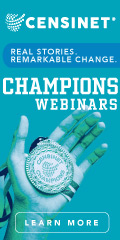I'd love to read a joint interview of Judy Faulker and Neil Pappalardo where they talk about those three days…
Being John Glaser 5/5/09
One of the greatest inventions of all time is the three-by-five card. Compact. Sturdy. Lightweight. Portable. Blank on one side. Lines on the other side. The three-by-five card has many uses.
The three-by-five card is at the core of my efforts to organize my work life. This card lists those things that I need to pay attention to, or ask about, or do in the next one to two weeks. If you were to look at my three-by-five card today, what would you see?
- Budget. I think this entry is permanently on the card since it seems we are always dealing with the budget – putting it together or monitoring it. Our operating and capital budgets have to be flat next year. At this time, our managers are making good progress on achieving this target. But our hospitals are not finished with their budgets, so they may cycle back in the next couple of weeks and ask us to make further cuts. Terrific.
- COMPASS. COMPASS is the name for our major revenue cycle initiative. We are working with Siemens and Accenture to standardize our revenue cycle processes and data and implement the systems needed to support that standardization and improvements. Like the budget entry, COMPASS will be on my card for years to come. We are moving well. Good progress is being made on the Newton Wellesley Hospital (our first implementation) plans. Progress continues on developing the governance and new management models that are integral to the project and are a big change for our hospitals that are used to autonomy. And outreach efforts are doing a nice job of helping people understand the capabilities of the Soarian system and the new processes. As is true for any large project, there are always issues and challenges that need attention from time to time.
- NWT Frm. I have no idea what this means. I apparently had something in mind when I wrote this, but I have forgotten what it was. If I haven’t figured it out in two weeks, I will presume that I took care of it and cross it off the list.
- Clin Ops Agenda. Clinical Systems Operations is a meeting of several IT leaders who discuss major clinical systems issues and strategies. We have a meeting in a couple of weeks and I’m trying to line up the agenda. While still in flux, it looks like we’ll have discussions about (a) the effort required to close the gap between our current clinical system features and the features we think we will need to qualify for Stimulus financial incentives; (b) an overview of our strategy to enable medical record coders to code entirely from the EHR and not need to pull the paper record; and (c) a discussion of the project demands for our Clinical Data Repository team – we need to help them prioritize.
- Common clinicals. It is time to return to the strategic conversation of how common should our clinical systems be and, given whatever degree of commonness we choose, how should we go about making that plan happen? We last had this conversation three years ago. In many ways we are making good progress towards that goal of commonality – our EMR implementation will be completed this calendar year, progressive adoption of services (in the SOA sense) continues, and the Brigham and Mass General are working together on Acute Care Documentation (ACD). However, we need to step back and broadly consider our current approach, which is best characterized as incremental and progressive homogeneity. We need to frame some overarching questions that need to be addressed, e.g., should we view this as a catalyst for broad transformation of care at Partners or will we focus largely on reducing the complexity of our portfolio of clinical systems? And we need to define the process for answering those questions. While we need to return to this discussion, we have to moderate the pace. The Brigham and Mass General will be consumed by the ACD and Medication Administration projects for a couple of years and we need to be careful that we don’t unnecessarily distract those efforts. And in many ways, the COMPASS project is plowing the ground for are still under developed organizational prowess at broad standardization of data and processes.I expect that FY10 will be spent developing and revisiting our common clinical systems plans with execution of the resulting plans beginning in FY11.
- Staff e-mail. Every month I write an e-mail to the IS department. This e-mail is a combination of news, strategic outlook, and overview of major initiatives. I have been doing this for nine years. I need to write this month’s e-mail. I haven’t figured out a topic. Presumably having this entry on the card will lead to a burst of inspiration at some point.
- Agility. We had an IS team look at improving our agility. They did a great job and I want to implement a number of their recommendations and advance the work that they started. But I haven’t gotten to it. This line has been on my three-by-five card for a long time. I need to get off my butt and do something about it.
- Jess – yard. Our middle kid Jessica lives in a condo (two units total) with two buddies in South Boston. My wife and I own the condo – rent more or less equals mortgage payment. But this does mean we are landlords, and as landlords, we need to deal with the tiny back yard. The plan is to turn the back yard from a sea of mud and weeds into somewhere young ladies and their boyfriends (assuming they pass the background checks) can hang out. Some yard plans have been developed. I need to let Jessica know which one we will go with. I’m OK with putting in a patio. The water fountain that spouts a 20-foot tall “geyser” every hour on the hour will get wacked from the plan.
There are other items on the three-by-five card, but I have probably bored you by now.
For those of you who have yet to discover the three-by-five card, I encourage you to check it out. No batteries. No worries about an operating system crash. Easy to read. You can drop it down the stairs and it doesn’t break. And you don’t need to stay in the lines when you write on it.

John Glaser is vice president and CIO at Partners HealthCare System. He describes himself as an "irregular regular contributor" to HIStalk.





















































































Very nice John…
A return to simplicity!
Best,
Don
“There are other items on the three-by-five card, but I have probably bored you by now.”
Too late. I was bored at “COMPASS.”
I remember the nifty 3×5 cards. If they had good information, I’d put holes in them and tuck them away into my small pocket binder, the predecessor to the Acer/HP “NetBook” computers that we see today. When I first started out the doctor that sent half of his patients my way had medical records consisting of 30 years of visits all on 1 4×6 card. He could see 50 patients a day without blinking an eye and working with only 1 nurse. Back in 1990 he still charged $15 a visit, cash. Even Medicare patients would see him as it was about equal to their copay.
I think that most likely CCHIT will coopt your 3×5 card idea and will begin to certify them, writing 3×5 card standards and then charge $40000.00 for the priviledge of being “3×5 card certified”… small card makers need not apply. Heck, they might even get Obama to say that the magical 3×5 cards are magically offering a better-quality platform that decreases errors, saves money, and even brings forth a positive ROI (not that it didn’t do that before). They will even promise to one day make the 3×5 cards interoperable!
They will come up with a catchy name, like “HICARD” (after “HITECH”), and initially tout that docs using said certified cards will make tax-backed big-bucks (of course pending “significant use” laws), and they can then begin threatening docs on how they will lose their profit and not be able to feed their families if they don’t start to use said certified 3.5 cards.
Who knows, maybe Tim and Inga will make a http://www.cardtalk2.com and Nick Harrington will start a http://www.cardupdate.com? Some paper vendors might begin making “enterprise” 3×5 cards and begin an association called “CARDMSS” to begin taking over the world. You will see certified 3×5 card makers like “AC” (Amazing Cards), e-MCs (e-Medical Cards), eCW (e-Card Wannabies), Greencard (used also for illegal immigrants), NextGenCard (they use purple lines), and of course there will be a Partners HealthCard System.
John, you’ve reshaped the EMR landscape by bringing up the technologically superior 3.5 card idea! I second the motion… Let me pinch myself to see if this is a dream come true…
Al
Oh- don’t forget to give this 3×5 card idea to President Obama. It sure as heck is better than his suckey HITECH/universal healthcare plans! Physicians might even participate in the thing (at least before CCHIT gets hold of it)…
Al
Don’t forget is also fits in your shirt pocket! The “NWT Frm” reference was priceless. There may be hope for us mere mortals after all.
Who knew Glaser was a Merlin Mann reader:
http://en.wikipedia.org/wiki/Hipster_PDA
There has been a ‘movement’ of sorts back to 3×5 cards.
It is referred to as a “Hipster Parietal Disgorgement Aid” (hPDA). This iteration began on the 43folders.com website in 2004, made popular for the book/life management of “Getting Things Done”. You can find more, including free printable templates at http://www.diyplanner.com. There are a few healthcare/patient related templates there.
John Norris
Full disclosure: I came up with a few hPDA templates myself, several years ago and they are still among the most active pages on my website.
I’m sorry, but it’s not fair for a big shot CIO to be able to write that well. Kudos John.
NWT frm: Perhaps a reference to a Newt Farm you’ve been thinking of investing in? Hey, how’d that ostrich thing ever turn out?
Okay – I have THE topic for your next IS email. Please, invite them ALL on a tour (better yet, mandate it) of the inner workings of the hospital. Where I work, IS is one of the support groups that lives in isolation from the daily doings of the hospital. We’re not even in the same building, and I suspect that is all too common. That, in my mind, is not good. Of course, we all know we work for a hospital that helps ailing patients, but it needs to be seen with the eyes at least once in a while – to be reminded of who their work impacts – for better or worse. I’m in year 30 of my IS career (only 3rd yr in hospital, however), and I find it helpful to leave my office building, walk to the main hospital, and cruise the many waiting areas to see the faces of child patients, their parents, and medical staff.
If I were king for a day, I might mandate such a tour, and maybe even include some difficult things to see.
Hey, those 3×5 cards are a great idea. Say… I have a swell idea, myself. With only a few thousand bucks, we could probably automate that card. That’s right! Picture this… a digital representation of a 3×5 on a laptop screen! Why, all you’d need do is bring along your handy laptop and fire it up once in a while. In almost no time at all you could have those reminders on the screen just to look at and get reminded of. Wait . a . minute! Let’s make it web-based! Yeah, that’s it. Heck, then we could ALL sign-in and see what your reminders are. I’m thinking of calling it… Chirper.
So for your next article, are you planning on extolling the virtues of the abacus?
No wonder we can’t get docs to accept electronic documentation.
3×5 inch kindle FTW!
/live and die by the three x five
You know something guys? The 4×6 card is even better!
Al
Glaser..Wake up man! You seem to be intoxicated with technology tonic! Have you used the products you extoll? I agree with 3X5 or smaller cards to hold medical info. The best form of portable medical info is a 3X5 card carried by patient and updated as needed. If you have an old Apple SE you can look up hypercard..an elegant electronic version of the same!
With all this hoopla about “partnering”..what is the ROI? How many doctors have been pissed off? Why is MA healthcare is so awful? Please get us some believable stats.